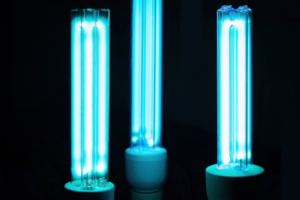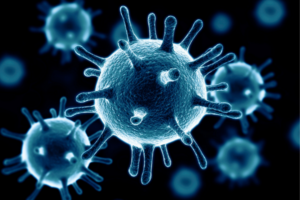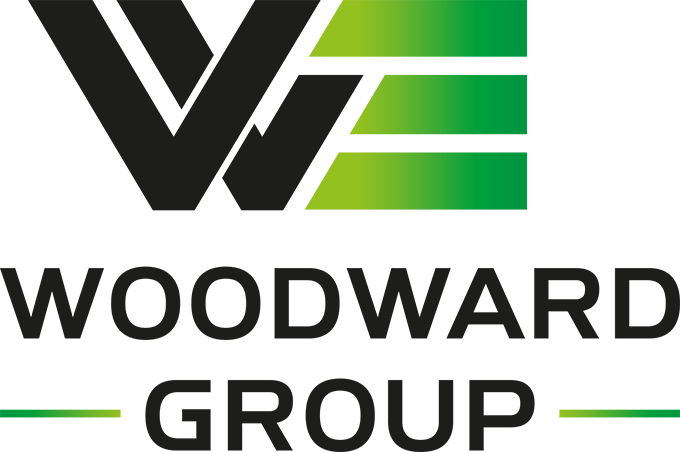Ultraviolet-C (UV-C) lamps can be used to disinfect air, surfaces, objects and water, and help significantly reduce the risk of infection from viruses and other bacteria. It’s perhaps no surprise then that interest in UV-C lighting has increased significantly since the start of the pandemic, particularly with evidence showing it to be effective at killing SARS-CoV-2, the virus causing COVID-19.
In this article, Woodward Group provides a straightforward guide to UV-C lighting and its many benefits for businesses.
What is UV light?
Ultraviolet (UV) light is a type of radiation that falls in the range of the electromagnetic spectrum between visible light and X-rays. It has more energy than radio waves or visible light but less energy than X-rays or gamma rays.
 There are three types of UV light: UV-A, UV-B and UV-C. We are mainly exposed to the first two types through the sun, with low energy UV-A light linked to skin aging over time, and medium energy UV-B light connected with more serious sunburns and skin cancers.
There are three types of UV light: UV-A, UV-B and UV-C. We are mainly exposed to the first two types through the sun, with low energy UV-A light linked to skin aging over time, and medium energy UV-B light connected with more serious sunburns and skin cancers.
The third type, UV-C light, has the most amount of energy of the three. It has too short a wavelength (200 to 400 nanometres) to cut through the Earth’s atmosphere and is largely absorbed by the ozone layer before it reaches us and causes any damage. It can however be re-created in a lightbulb using a specific subset of UV-C wavelengths, known as “far UV-C”, that can then be installed as a disinfection solution against germs, but is not dangerous to human health.
UV-C lighting: how does it work?
UV-C lighting deactivates germs by damaging their molecules and proteins. This makes them incapable of performing processes that they need to do to survive. It is effective on surfaces, in water and in the air, and has rendered inactive all bacteria and viruses it has been tested on to date.
Research published in the American Journal of Infection Control (AJIC) suggests that UV-C light is also proving effective against coronavirus. The study shows the live virus on a laboratory surface was reduced by 99.7% in 30 seconds using far UV-C.
When installed correctly, UV-C lighting can be safely applied as a disinfection solution by businesses across numerous sectors, from retail, schools, and offices, to hospitality, transportation and banking.
Benefits of using UV-C lighting for disinfection
Unlike most cleaning chemicals, UV light is non-toxic and is therefore far more eco-friendly. It is also safe to use around food in the restaurant and hospitality sectors – UV-C light  can help preserve nutritional value and eliminate food-borne illnesses like E. coli and salmonella.
can help preserve nutritional value and eliminate food-borne illnesses like E. coli and salmonella.
UV-C lighting systems can improve businesses’ heating and ventilation, air conditioning and refrigeration (HVAC/R) system efficiency by helping to eliminate and prevent the build-up of organic material on surfaces, improve airflow and maintain heat transfer levels. With proper light placement, all germs can be eliminated from air passing through an HVAC/R unit, and because UV-C lighting is a dry disinfection method, moulds and spores are less likely to thrive than with other cleaning solutions.
Though people might assume UV-C lighting technology is expensive, it is generally affordable and can lead to numerous cost savings for a business. These include cost savings associated with increasing the operating efficiency of HVAC/R units, the reduction of lost work hours due to illness as a result of viruses, plus the wider benefits that accrue from maintaining a healthier working environment.
How we can help
UV-C lighting can be used for a range of applications and across multiple industries. Woodward Group’s experienced engineers use the latest technologies to supply and install tailored lighting solutions for businesses of all sizes and across all sectors.

